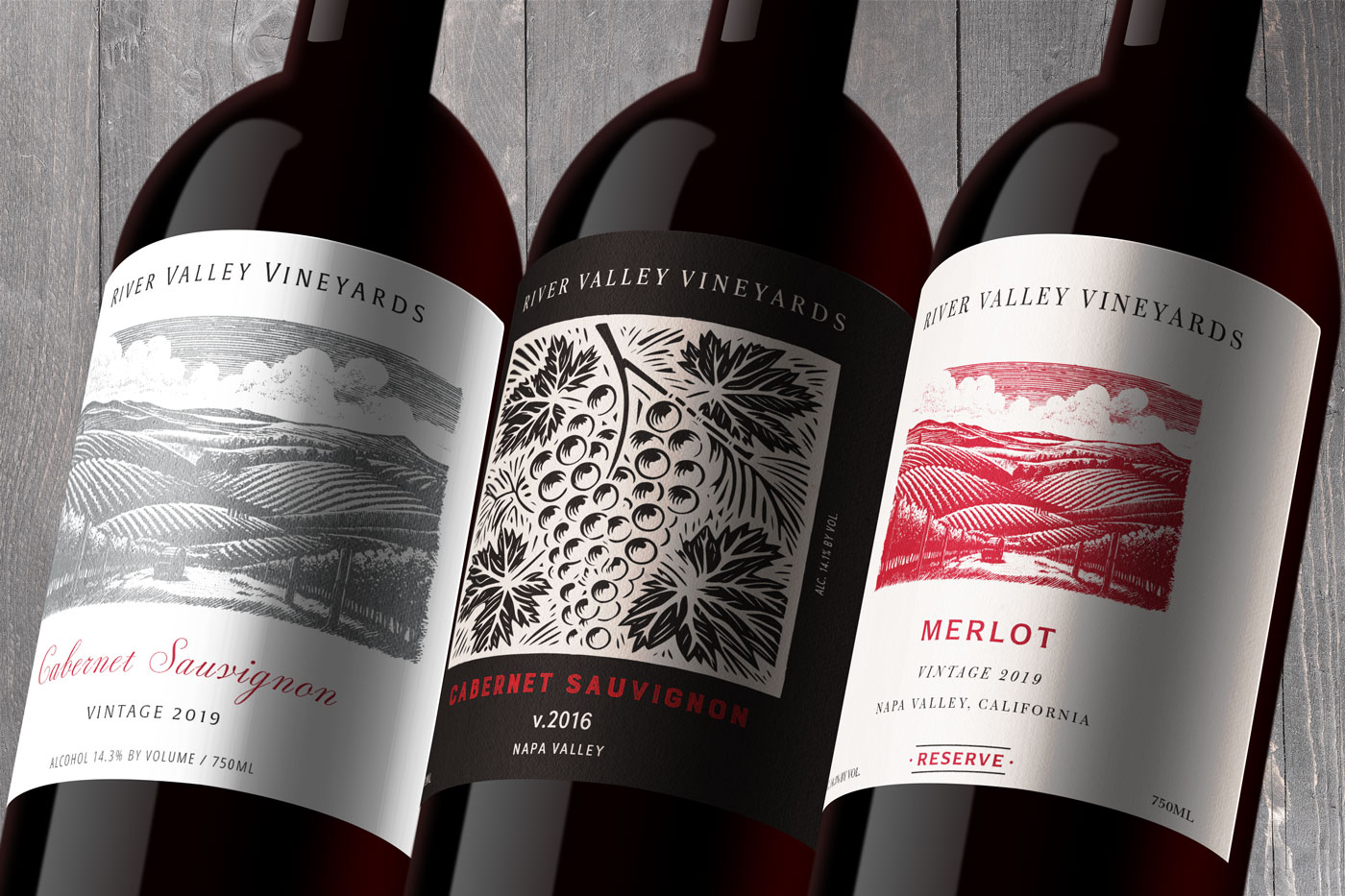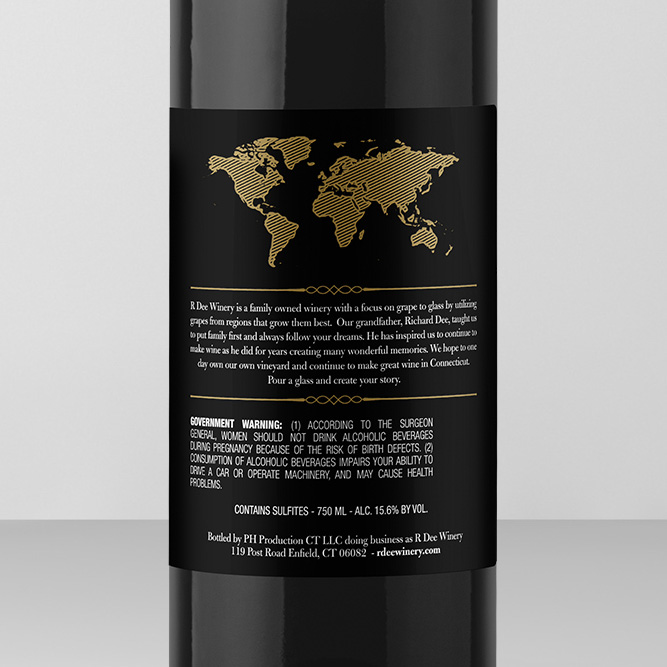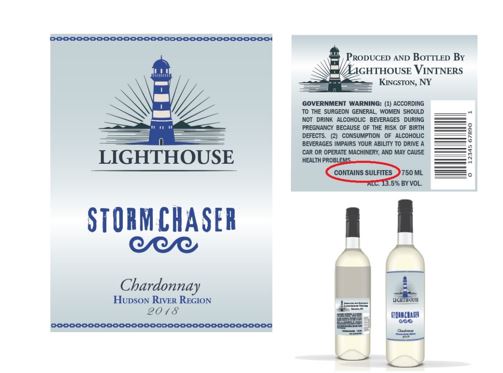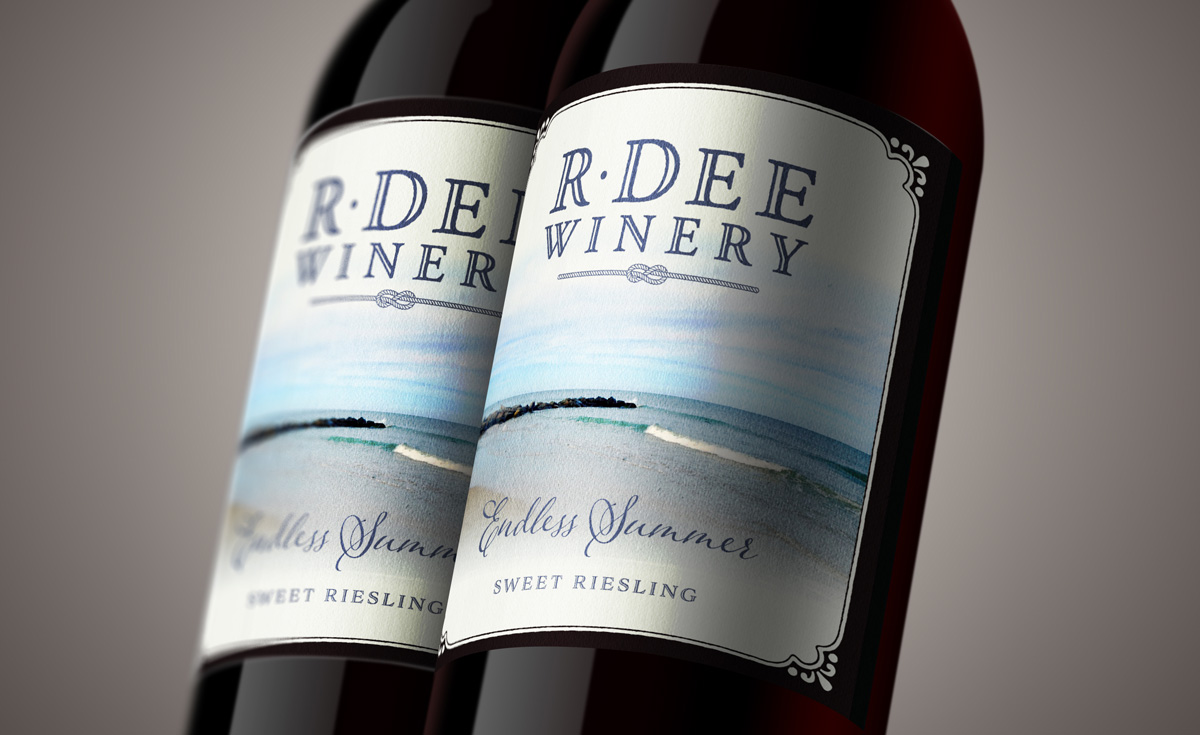Packaging, Print & Design Inspiration, Resources
TTB Wine Label Requirements
Everything You Need to Know About Wine Label Requirements
“In wine, there’s truth”—9 pieces of truth, exactly, that go into the outside of the wine bottle—the label. Perusing through one’s local adult beverage store, many only pay attention to the Varietal Designation (Merlot, Pinot, Cab) but there is more that is required to get the wine to the palate. In fact, the TTB (Tobacco and Alcohol Tax and Trade Bureau) has set forth wine label requirements in order to hep protect the consumer.
Brand Name
This may seem naïve but, yes, a brand name is required on a wine bottle. The brand name is traditionally the producer, the winery or the vineyard. Some popular brand names are Yellow Tail, Barefoot, Beringer, Hardys, and if one is interested in the organic route you have Jean Charles Boisset (JCB), Hahn, and Frog’s Leap. Within that brand name needs to be the bottler’s name and address (city and state) and this must be preceded by “Produced By” or “Packed By”. In addition to the brand name, you must include the Country of Origin, or where the grapes are grown. If you labeled a wine “Spanish Cabernet” at least 75% of the grapes going into your recipe must originate and be grown in Spain.

Varietal Designation
Wine has different classes or types and that must be included on the wine label. Wine is placed into three different types—table wine, dessert wine, and sparkling wine. The types are not required to be on the label. The Varietal Designation within those types is what must be included and within that Varietal Designation the word ‘wine’ must be included. For example, Rose Wine, instead of simply Rose. In addition, you may have seen a wine with a fanciful name like “White Girl Rose”. A fanciful name is entirely optional, but again, the word wine needs to be utilized so a more official name would be White Girl Rose Wine. You also need to include the Varietal references—IE how much of each grape varieties are used within the mixture and it must be equal to 100%. An example would be a Red Blend comprised of 50% Merlot 25% Cabernet and 25% Pinot. Essentially, the customer needs to know what they are drinking.
ABV Requirement
Every bottle of alcohol needs to include the alcohol content. On a wine label this is called the ABV or alcohol content by volume. Proof is not used on wine labels. U.S. law allows for 1.5% variation on the wine label. Let’s cycle back to the classes of wine—Table Wine and Dessert Wine; these are differentiated by the alcohol content. Table Wine is 7%-14% ABV. and Dessert Wine 14%-24% ABV. With the ABV included, the words Table Wine and Dessert Wine do not need to be included on the label—hence why you may have never heard or seen those in your local package store.

Vintage Date
The annual produce of the grape harvest, especially with reference to the wine obtained. The Vintage Date is not required to be on the label. However, if it is included, the Appellation of Origin is required. For example:
Vintage 2017
Napa Valley, California
An appellation of origin is not required on all wine labels. However, the label must include an appellation of origin if the wine is labeled with:
- A vintage date;
- A varietal designation;
- A type designation of varietal significance;
- A semi-generic designation;
- An “estate bottled” claim; or
- A product name qualified with the word “brand” under the requirements of 27 CFR 4.39(j).
Net Volume Requirement
When it comes to wine labels, size matters. Afterall, who wants a small bottle of wine? In this case, the volume of contents not only matters, it’s required. The Net Volume of Contents must be included in ml. on the wine label.
Sulfite Declaration
During the fermentation process, yeasts transform sugars present in the grape juice into ethanol. Sulfites are sometimes added to help protect the wine against oxidation, which can produce unwanted microorganisms such as bacteria – which can make the wine undrinkable, and in some cases, dangerous. Because some people have sensitivities to sulfates, if a sulfating agent is 10 ppm or more there must be a sulfite declaration like “Contains Sulfites” or “Contains a Sulfating Agent (s)”.

Health Warning Statement
Every person who drinks any type of alcohol has most likely seen the Health Warning Statement: “(1) According to the Surgeon General, women should not drink alcoholic beverages during pregnancy because of the risk of birth defects. (2) Consumption of alcoholic beverages impairs your ability to drive a car or operate machinery, and may cause health problems”. This is one statement, democrat or republican, that has not been the center of any debate or health crisis…yet.
Design / Font Specifications
According to the TTB, fonts and type:
- Must be readily legible under ordinary conditions;
- Must appear on a contrasting background;
- Must appear separate and apart from, or be substantially more conspicuous than, descriptive or explanatory information.
| Type Size Requirement | ||||
| Brand Name | At least 1 mm for containers 187 ml or less. | At least 2 mm for containers larger than 187 ml. | ||
| Bottler’s Name and Address | At least 1 mm for containers 187 ml or less. | At least 2 mm for containers larger than 187 ml. | ||
| Varietal Designation | At least 1 mm for containers 187 ml or less. | At least 2 mm for containers larger than 187 ml. | ||
| Country of Origin | At least 1 mm for containers 187 ml or less. | At least 2 mm for containers larger than 187 ml. | ||
| ABV/Alcohol Content by Volume | At least 1 mm but not larger than 3 mm for bottles that are 5L or less. | |||
| Vintage Date | At least 1 mm for containers 187 ml or less. | At least 2 mm for containers larger than 187 ml. | ||
| The Net Volume of Contents | At least 1 mm for containers 187 ml or less. | At least 2 mm for containers larger than 187 ml. | ||
| Sulfite Declaration | At least 1 mm for containers 187 ml or less. | At least 2 mm for containers larger than 187 ml. | ||
| Health Warning Statement | At least 1 mm for containers that are 237 ml or less. | At least 2 mm for containers over 237 ml or up to 3 L. | At least 3 mm for containers that are larger than 3 L. |
Need a hand with design? Contact us to discuss your project!
For a list of full requirements, visit: https://www.ttb.gov/labeling-wine/


